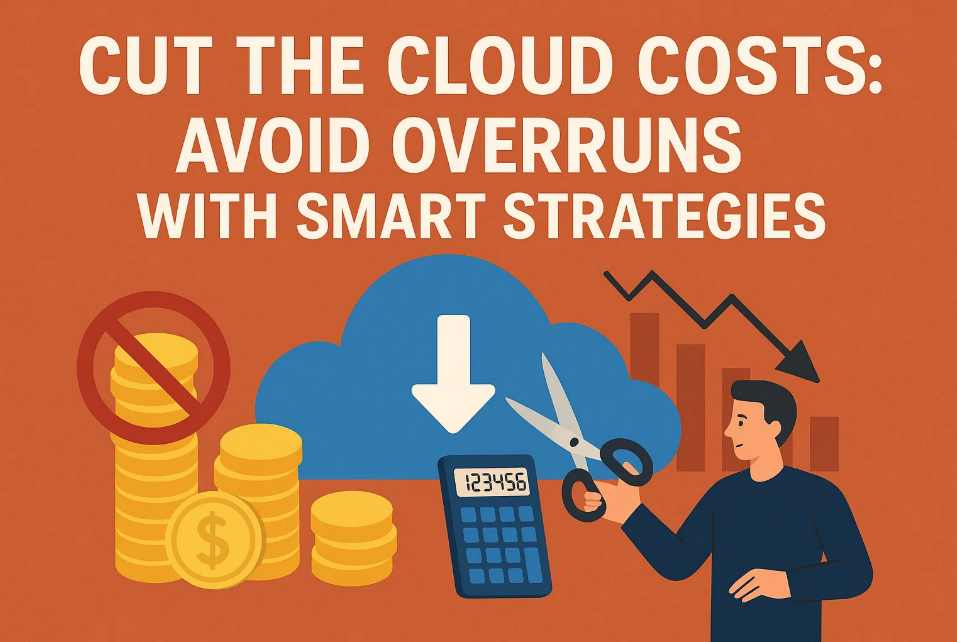
The cloud promises agility, scalability, and cost efficiency, but without careful management, cloud costs can spiral out of control—turning a scalable advantage into a budgeting nightmare. Whether you’re running workloads on Microsoft Azure, AWS, or Google Cloud, cost overruns are a common pain point for engineering and finance teams alike.
In this blog, we explore the top reasons for cloud infrastructure overspending and how to avoid them through architecture best practices, automation, and proactive monitoring.
📉 Top Reasons Cloud Infrastructure Costs Exceed Budgets
1. Over-Provisioning of Resources
Teams often provision compute, storage, and database instances based on peak expectations rather than real usage. This leads to idle or oversized infrastructure.
🛠️ Solution:
- Use auto-scaling groups (e.g., Azure VM Scale Sets, AWS Auto Scaling) to scale dynamically.
- Right-size resources based on historical usage via cost analysis tools like Azure Advisor or AWS Cost Explorer.
2. Lack of Monitoring and Optimization
Without real-time observability, cost anomalies go unnoticed until bills arrive. Engineering teams may miss high-usage services, failing functions, or redundant resources.
🛠️ Solution:
- Set up cloud-native monitoring tools (e.g., Azure Monitor, AWS CloudWatch).
- Automate alerts for unexpected spend.
- Use FinOps dashboards to track usage by project, team, or environment.
3. Unused or Underutilized Resources
Forgotten VM instances, idle containers, unattached storage disks—these are common culprits of waste.
🛠️ Solution:
- Schedule resource cleanup jobs using tools like Azure Automation or GCP Cloud Scheduler.
- Implement automated shutdown policies for development/test environments outside work hours.
4. Lack of Automation and Scaling
Manual provisioning and lack of elasticity can lead to both underutilization and cost inefficiency.
🛠️ Solution:
- Embrace Infrastructure as Code (IaC) with Terraform, Bicep, or Pulumi.
- Use serverless services (like Azure Functions or AWS Lambda) where possible to ensure usage-based billing.
5. Data Egress Charges
Moving data across regions, or from cloud to on-prem systems, incurs hidden charges that scale with usage.
🛠️ Solution:
- Minimize cross-region transfers and keep compute/storage in the same region.
- Use content delivery networks (CDNs) like Azure Front Door to reduce outbound data traffic.
6. Misunderstanding Pricing Models
Many teams ignore or misapply reserved instances, spot pricing, or committed use discounts, leading to inflated costs.
🛠️ Solution:
- Choose the right pricing strategy: Pay-as-you-go for short-term projects; Reserved Instances for steady workloads.
- Use Savings Plans or Committed Use Discounts where applicable.
7. Unplanned Disaster Recovery or Backup Costs
Sudden disasters or ad-hoc backups without a clear retention policy can introduce unexpected costs.
🛠️ Solution:
- Use geo-redundant storage selectively based on RTO/RPO needs.
- Define automated backup policies with lifecycle management (e.g., Azure Backup Vault, AWS Backup).
8. Security and Compliance Overheads
Ignoring security requirements early can lead to costly retrofits, expensive 3rd-party tools, and compliance penalties.
🛠️ Solution:
- Integrate security-as-code in your CI/CD pipeline.
- Use native security tools like Azure Security Center or GCP Security Command Center.
- Plan for compliance audits with pre-configured templates (e.g., HIPAA, GDPR).
9. Unforeseen Traffic Spikes
Unexpected customer behavior or marketing campaigns can spike load and drive compute and bandwidth costs higher.
🛠️ Solution:
- Design for elastic scale and cost protection.
- Implement rate limiting, caching (Cloudflare, Redis), and CDN usage to buffer impact.
10. Underutilized Storage
Blob, S3, or file storage that isn’t actively used still accrues costs—especially in premium tiers.
🛠️ Solution:
- Use tiered storage (e.g., Azure Blob Hot/Cool/Archive).
- Set up lifecycle policies to auto-archive or delete old data.





A WordPress Commenter
July 31, 2025Hi, this is a comment.
To get started with moderating, editing, and deleting comments, please visit the Comments screen in the dashboard.
Commenter avatars come from Gravatar.